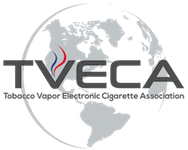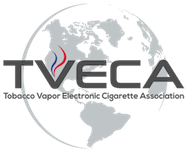R.J. Reynolds Tobacco Co. is attempting another go with Eclipse.
The heat-not-burn traditional cigarette technology was considered ahead of its time when developed in the 1990s, but has struggled to gain traction with smokers.
In July, Reynolds entered the Food and Drug Administration’s regulatory gauntlet with a substantial-equivalence application, according to an investor presentation Wednesday by parent company British American Tobacco Plc.
A substantial-equivalence filing is for products that either have the same characteristics as those marketed on/before Feb. 15, 2007, or have different characteristics but do not raise different questions of public health.
“Our application is for an improved version of Eclipse based on the grandfathered version of the product,” Reynolds spokesman David Howard said.
Howard said the improvements target the “sensory characteristics and ease of lighting” Eclipse cigarettes.
“There is no definitive timetable for (FDA) review, but we are optimistic it will be completed in the near future,” Howard said.
Heat-not-burn cigarettes work this way: Smokers light a carbon tip that heats air that, as it is inhaled, passes over tobacco in a cylinder identical to a standard cigarette. The flavors of tobacco and nicotine are inhaled and then exhaled by smokers.
Eclipse was Reynolds’ first national attempt at the heat-not-burn category, in distribution from 2003 to 2007. Eclipse remains available in limited supply at wholesale and retailer request, including at local Reynolds facilities and in markets in the Carolinas and Texas.
“We believe we are the experts in the area of heat-not-burn, given our more than two decades of research and innovation in the category,” Howard said.
The main challenge with Eclipse has been getting smokers’ to adapt to the taste and overall experience with heating tobacco leaves rather than burning them, the latter of which tends to make for an easier smoke but also is a major contributor to the release of carcinogens.
However, a study released in June on secondhand smoke from heat-not-burn cigarettes found that the products release some of the same cancer-causing chemicals as do traditional cigarettes. The study by the University of Bern in Switzerland was published in JAMA Internal Medicine.
The Bern researchers determined that “although these products may or may not produce smoke, they release cancer-causing chemicals … similar levels of many volatile organic compounds and nicotine as conventional cigarettes and higher levels of the polycyclic aromatic hydrocarbon acenaphthene than conventional cigarettes.”
Question of demand
Until recently, analysts have questioned the level of demand for heated cigarettes among smokers, while retailers say they are getting more requests for the products.
In August 2015, Reynolds shelved Revo — a re-branded version of Eclipse — following a test market in Wisconsin. The product sold at retail for about $6 a pack.
At that time, Susan Cameron, then-Reynolds’ chief executive and president, had expressed confidence that heat-not-burn “finally finds its time.”
Howard said there are no plans for another test market, although the company continues to field consumer responses on lessening the cigarette smoke smell with Eclipse.
BAT confirmed Wednesday plans for a substantial-equivalence filing for its heat-not-burn product, glo, with the FDA in 2018, as well as a modified-risk tobacco product application in 2020.
A modified-risk tobacco product application seeks authorization to market products as reduced harm or reduced risk compared with traditional cigarettes.
BAT distributes glo in five major international markets: Canada, Japan, Russia, South Korea and Switzerland.
Howard said Reynolds is not concerned about having glo competing with the revamped Eclipse in the U.S.
“We believe adult tobacco consumers are increasingly interested in heat-not-burn and other innovative products,” Howard said. “As demand grows, we believe the market share for heat-not-burn will grow with it.”
Having glo in the U.S. could mean a production boost at Reynolds’ Tobaccoville plant, where Eclipse and Vuse, its top-selling electronic cigarette, are made.
Nicandro Durante, BAT’s chief executive, told the Winston-Salem Journal in July that as the company explores which BAT products to bring to the United States, it is likely those products will be made domestically, as they are in other major BAT markets.
“I have found it is very difficult to sell product in the U.S. that isn’t made in the U.S.,” he said.
The reverse could be true, at least in the short term, in terms of ramping up local Newport and Vuse production once BAT decides how and where it wants to sell those products globally.
Regulatory ‘road map’
Glo’s main rival for global next-generation product sales is Philip Morris International, which entered in May the FDA regulatory pipeline for its heat-not-burn cigarette product iQOs with a modified-risk product application.
The manufacturer has expressed optimism for debuting the Marlboro heat sticks in the U.S. in 2018.
Japan Tobacco is dipping its toes in heat-not-burn in Japan.
Dr. Scott Gottlieb, the FDA commissioner, has called for a sweeping regulatory “road map” on tobacco and nicotine products.
That included easing some regulations for product innovations, and extending the application deadline for FDA regulatory review for new products, such as e-cigs and vaporizers, from late 2018 to as far out as August 2022.
“We are proud to share our exciting future product pipeline across both the tobacco heating and vapor categories and to provide shareholders with an opportunity to experience the products first-hand,” Nicandro Durante, BAT’s chief executive, said in a statement. “Our next-generation product business has real momentum, and our confidence is reflected in the financial objectives we have set out.”
BAT projects generating $662.5 million in revenue this year from “next generation” products such as vapor/electronic cigarettes and heat-not-burn traditional cigarettes. The forecast is for more than $1.32 billion in fiscal 2018 and for $6.63 billion in fiscal 2022.
“We expect the next-generation product business to be breaking even by the end of 2018 and to deliver substantial profit by 2022,” BAT said in a news release.
BAT said traditional cigarettes are forecast to represent 90 percent of industry sales in 2020 at nearly $400 billion.
Meanwhile, vapor products are expected to attract 80 million global consumers by 2020 with industrywide sales of $20 billion, while heat-not-burn products are projected to attract 19 million global consumers, also with $20 billion in industrywide sales.
Bonnie Herzog, an analyst with Wells Fargo Securities, has called the U.S. market potential for reduced-risk products “the most interesting development” gleaned from her latest monthly survey with retailers of tobacco products.
“Nearly 60 percent of retailers are optimistic about the future of reduced-risk products,” Herzog said. “Interest in heat-not-burn technologies and iQOS specifically has increased.”
That interest, Herzog said, is “laying the groundwork, we think, for an eventual industry pivot toward reduced-risk products as the next growth catalyst on the horizon.”



